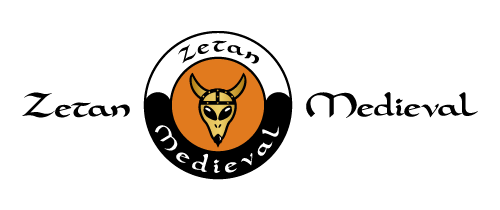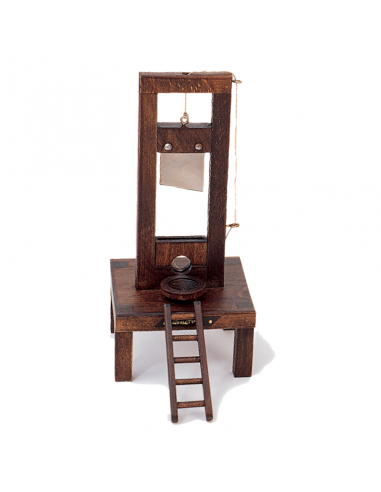French Guillotine From 1792
Zetan MedievoFrench guillotine from 1792. Measures 14 x 14 x 31. Weight 500 gr.
Miniature replica of the French guillotine of 1792.
The guillotine is an execution machine designed to carry out executions by decapitation quickly and efficiently. While commonly associated with the French Revolution, the first functional version of the guillotine was developed in 1792 by French physician and surgeon Joseph-Ignace Guillotin. Here are some important points about the French guillotine:
History and context: The guillotine became a symbol of the French Revolution and was used as the official method of execution in France during a significant period of the Revolution (1789-1799) and after it. It was seen as a more humane and equitable means of execution compared to previous methods, which were often cruel and inhumane.
Operating mechanism: The guillotine consists of a sharp blade that slides vertically in a guide, cutting off the condemned man's head in a single clean and quick stroke. The machine was operated manually using a rope or a lever that released the blade.
Efficiency and speed: One of the advantages of the guillotine was its ability to carry out executions quickly and consistently. This allowed for mass executions and was seen as an effective deterrent.
Equality before the law: The guillotine was promoted as a means of execution that treated all condemned people equally, regardless of their social status. It was argued that this represented progress towards equality before the law, one of the principles of the French Revolution.
Later Use: Although the guillotine was primarily associated with the French Revolution, it was used in France for many decades afterwards, including the Napoleonic era and the period after the Revolution. Its use as an official method of execution was eventually discontinued in 1981, and the last guillotine execution in France took place in 1977.
Legacy and controversy: The guillotine is an infamous historical object and a symbol of the French Revolution. While some argue that it was a humanitarian improvement compared to previous methods of execution, others consider it a symbol of violence and repression. Its history and legacy continue to be the subject of debate and discussion.
The French guillotine is an execution machine that played an important role in the history of the French Revolution and became a symbol of the fight for equality before the law. Although it was used in a specific period of French history, its impact and legacy live on in the public consciousness.




